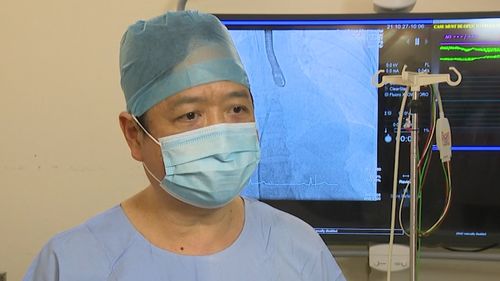‘Like a landing on the moon’: Australian doctors’ groundbreaking heart attack treatment

Professor Martin Ng from the Royal Prince Alfred Hospital and the University of Sydney , said treatment for heart attacks have not changed for more than 20 years
Australian doctors have made a groundbreaking discovery in the treatment of heart attacks, a breakthrough they say is as significant as landing on the moon.
Written content from Sarah Swain
They’ve now been given an $8 million boost to run a major trial. Heart attack survivor Wayne Cook will be the first in the world to be part of this new trial.

“I had pain in both my biceps and across my back,” the 57-year-old, who had a major blockage, said of his heart attack.”I still didn’t think my symptoms were a heart attack but the pain was excruciating. “The Perth man quickly received life-saving treatment — a balloon unblocked his artery and a stent was inserted to hold it open.
Professor Martin Ng from the Royal Prince Alfred Hospital and the University of Sydney said treatment for heart attacks had not changed for more than 20 years.
One in two treated patients also have blockages downstream, in the microvessels of their heart, which increases their risk of dying.
Read: Spider venom may save heart attack victims
Scientists in Australia have made a discovery about spider venom that they hope could someday lead to drugs that could save heart attack suffers.
The venom from a Fraser Island funnel-web spider is showing promise as a potential for new class of drugs that could lead to saving millions of lives. Read aricle here
“There’s a fundamental serious problem that still isn’t resolved,” he said.”These vessels are so small so they can’t be seen on the X-ray equipment from which we do the angiogram.
“Now, a wire with sensors measures blood pressure and flow. It’s used to identify blockages downstream, so patients can then receive a clot-busting drug. An earlier study, funded by taxpayers, uncovered astonishing results.
“This observation is for us, like a landing on the moon,” he said. This larger trial will involve more than 500 heart attack patients, who are identified as being higher risk.
Researchers have received $8 million dollars from the overseas firm. Read more from 9news





